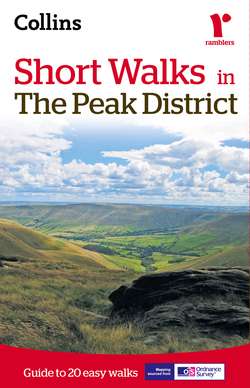Читать книгу Short walks in the Peak District - Collins Maps - Страница 12
Equipment
ОглавлениеEquipment, including clothing, footwear and rucksacks, is essentially a personal thing and depends on several factors, such as the type of activity planned, the time of year, and weather likely to be encountered.
All too often, a novice walker will spend money on a fashionable jacket but will skimp when it comes to buying footwear or a comfortable rucksack. Blistered and tired feet quickly remove all enjoyment from even the most exciting walk and a poorly balanced rucksack will soon feel as though you are carrying a ton of bricks. Well designed equipment is not only more comfortable but, being better made, it is longer lasting.
Clothing should be adequate for the day. In summer, remember to protect your head and neck, which are particularly vulnerable in a strong sun and use sun screen. Wear light woollen socks and lightweight boots or strong shoes. A spare pullover and waterproofs carried in the rucksack should, however, always be there in case you need them.
Winter wear is a much more serious affair. Remember that once the body starts to lose heat, it becomes much less efficient. Jeans are particularly unsuitable for winter wear and can sometimes even be downright dangerous.
Waterproof clothing is an area where it pays to buy the best you can afford. Make sure that the jacket is loose-fitting, windproof and has a generous hood. Waterproof overtrousers will not only offer complete protection in the rain but they are also windproof. Do not be misled by flimsy nylon ‘showerproof’ items. Remember, too, that garments made from rubberised or plastic material are heavy to carry and wear and they trap body condensation. Your rucksack should have wide, padded carrying straps for comfort.
It is important to wear boots that fit well or shoes with a good moulded sole – blisters can ruin any walk! Woollen socks are much more comfortable than any other fibre. Your clothes should be comfortable and not likely to catch on twigs and bushes.
It is important to carry a compass, preferably one of the ‘Silva’ type as well as this guide. A smaller scale map covering a wider area can add to the enjoyment of a walk. Binoculars are not essential but are very useful for spotting distant stiles and give added interest to viewpoints and wildlife. Although none of the walks in this guide venture too far from civilisation, on a hot day even the shortest of walks can lead to dehydration so a bottle of water is advisable.
